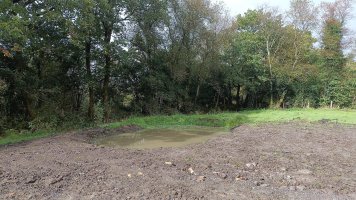Should I try and grow vegetables that like boggy land or work on drainage to make the land not boggy? The space is around 2 acres.
I saw a couple of youtube videos, one in scotland, so same climate pretty much, where they grew rice and said if you choose the right variety then it isn't too hard. I eat tons of rice and that is my main staple and it dries so it would go to good use so could I try that on the boggy parts?
I would say it is mostly boggy about 60-70% with only a few parts not boggy.
So how best to manage that? From what I have read irrigation is a very costly thing. From how hard it has been just clearing the overgrowth for access the idea of having to do all that for irrigation, for maybe a 2ft ditch is daunting. In that case I would envision either hiring a digger or doing volunteer days for free labour in exchange for staying in a picturesque location and working on a permaculture project.
My goal is to work the land but not quite sure how yet. I did think vegetables initially but I thought since it would only be for myself there would be a massive surplus. Still do a bit of that but otherwise want to make good use of it and tend to it. So how I proceed depends on my goals and I am not sure what they are yet so would like to get some more ideas.
Not really interested in planting trees since they take decades to come to maturity don't they.
I saw a couple of youtube videos, one in scotland, so same climate pretty much, where they grew rice and said if you choose the right variety then it isn't too hard. I eat tons of rice and that is my main staple and it dries so it would go to good use so could I try that on the boggy parts?
I would say it is mostly boggy about 60-70% with only a few parts not boggy.
So how best to manage that? From what I have read irrigation is a very costly thing. From how hard it has been just clearing the overgrowth for access the idea of having to do all that for irrigation, for maybe a 2ft ditch is daunting. In that case I would envision either hiring a digger or doing volunteer days for free labour in exchange for staying in a picturesque location and working on a permaculture project.
My goal is to work the land but not quite sure how yet. I did think vegetables initially but I thought since it would only be for myself there would be a massive surplus. Still do a bit of that but otherwise want to make good use of it and tend to it. So how I proceed depends on my goals and I am not sure what they are yet so would like to get some more ideas.
Not really interested in planting trees since they take decades to come to maturity don't they.


